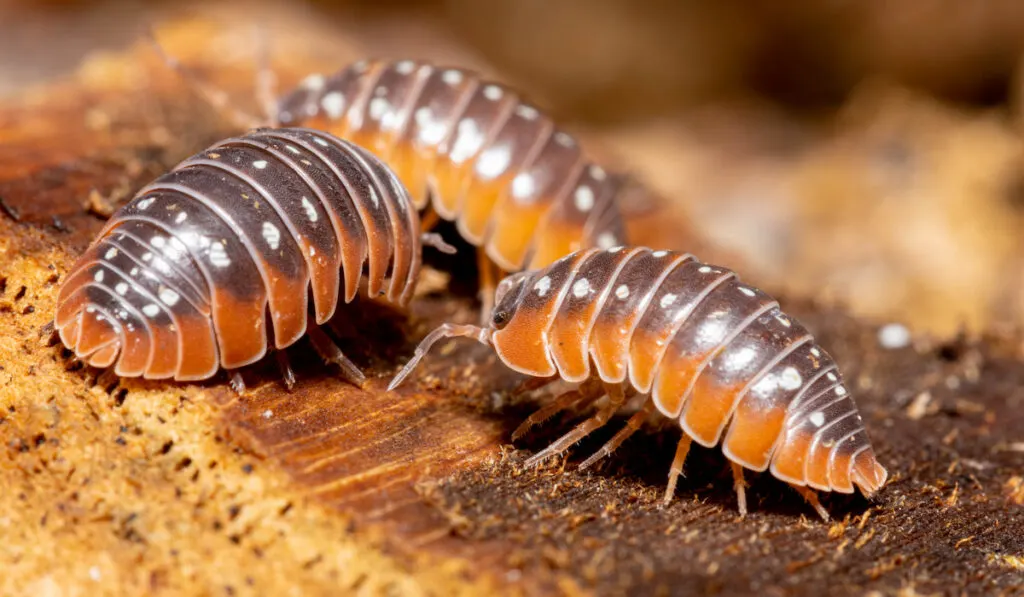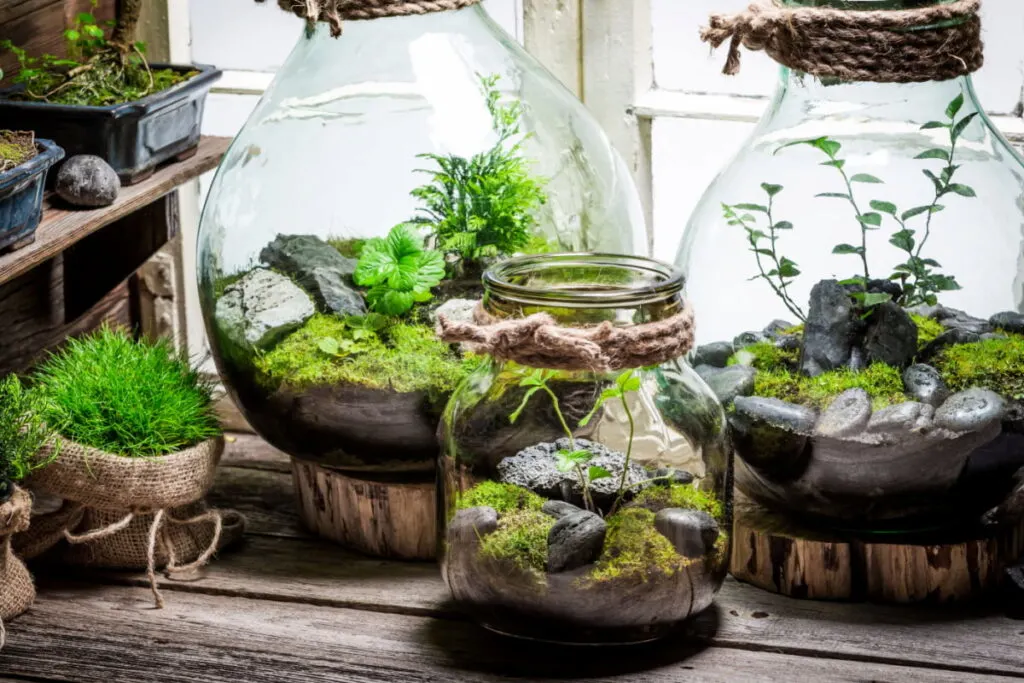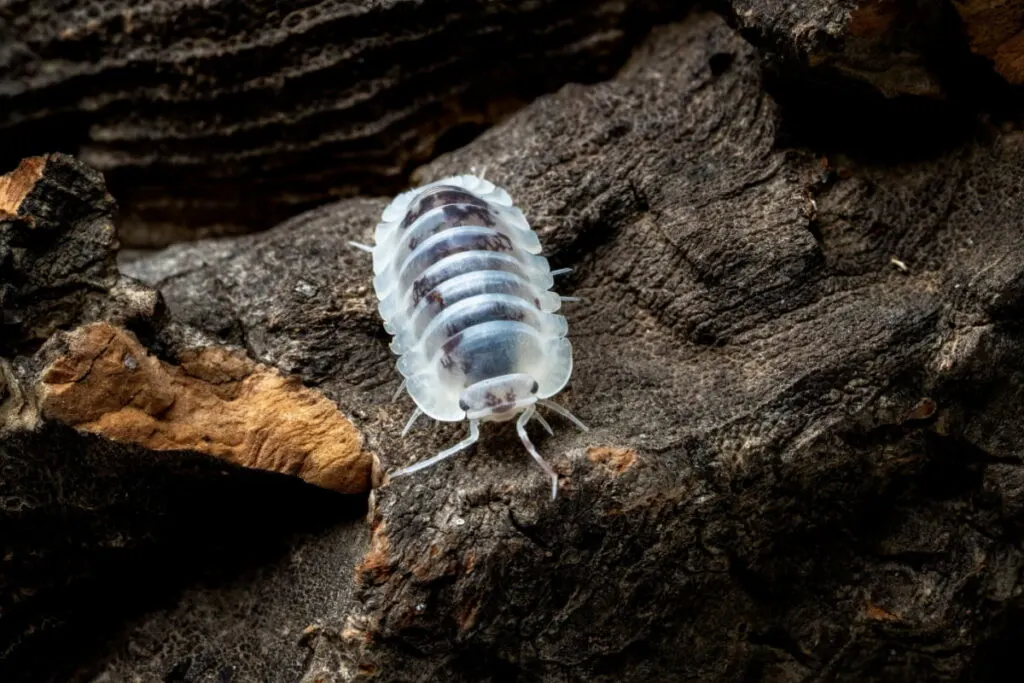Who doesn’t like the sight of roly poly tanks in their home? Isopods, or roly poly bugs, are cute creatures that can amaze you and your visitors. If you want to start an isopod colony, you should make sure that you do not start with too many of them.
How many isopods should you put in a terrarium?
You should have around 10-15 isopods per 25 square inches.
When starting an isopod terrarium, you should note that the fewer the better. This will help prevent you from losing a lot of isopods especially when you are still learning the ins and outs of caring for your bugs.

What should be the minimum or the maximum number of isopods in a tank? Must you keep your isopods in groups? We’ll answer these questions and more in the rest of this article.
Table of Contents
How Many Isopods Can You Keep in a Terrarium?
There should be 10-15 isopods in every 25 square inches of your terrarium. Note that the specific number of isopods in a tank depends on how large your isopod species can grow. You should put a smaller number of isopods in your terrarium if the isopods are large.
Let’s say that you have a 5-liter terrarium. There should be 10-20 isopods in the tank. You can add a little bit more, but make sure that they are not too many (we will discuss how you can tell if they are too many later).
When introducing isopods into your terrarium, remember that when the conditions are right, your isopods will reproduce.
It is best to start with a smaller population and wait until their number increases by reproduction than to start with a large population.
There may come a time when your isopods are becoming too many in a terrarium. How can you tell?
How to Tell That There Are Too Many Isopods in Your Terrarium
Here are some ways to tell if you have too many isopods in your tank:
- Food Depletes Quickly: Your isopod food should spend around 3 days in the tank. If the food is already decomposing, it should be gone within 24 hours. If the food particles disappear quickly, in less than 12 hours, or your isopods do not wait until the food starts decomposing before they eat it, you may have too many isopods in the tank.
- More Isopods Active in Daylight: Isopods are active at night. When a few isopods do not get enough food at night, they might move in the day. If you see many isopods crawling in the terrarium in daylight, there might be too many in that tank.
- Isopods Crawling Over Others: When your isopods are active at night, make sure that they are not crawling on top of others. If many isopods are crawling over others, you may have too many in that tank.
How then can you tell if there are too few isopods in a tank?
How to Tell That There Are Not Enough Isopods in Your Terrarium

Can there be too few? Always remember that it is best to raise isopods in groups. You should not raise an isopod in isolation. For this reason, there can be not enough isopods in the terrarium. Here are some ways to tell that there are not enough isopods in the tank:
- Presence of Mold: The presence of mold in your isopod terrarium indicates that there are not enough isopods. When you have many isopods in a terrarium, they will consume their food before it becomes moldy.
- Very Little Activity in the Terrarium: Does the terrarium look boring? If your terrarium does not look exciting at night, you need to add more isopods.
- Smelly Substrate: Smelly substrate indicates that there is too much organic matter in the substrate. It is caused when there are not enough isopods to consume the humus and other decaying materials in the substrate.
Now you know when you have too many or too few isopods in a terrarium.
How to Control Your Isopod Population
Controlling your isopod population is easy. When your isopods start reproducing, they may become too many later on.
To reduce their population, you only need to scoop them out with a spoon and keep them in a new tank or your garden.
If you are bringing them into a new tank, make sure that the tank is suitable for isopods.
If you are taking your isopods to the garden, keep them in a humus and moisture-rich area. Don’t worry, your garden plants are safe with isopods around. Isopods do not destroy crops.
If you are keeping your isopods in a terrarium, you need to care for them. How can you take care of isopods in your terrarium?

Care Requirements for Isopods in a Terrarium
Here are some tips to care for isopods:
1. Housing
As you already know, the size of your isopod tank matters a lot as you need to add more isopods into larger tanks. Do not forget about the tank ventilation as well. With proper ventilation, gases (oxygen and carbon dioxide) can flow freely in and out of the terrarium.
You can add ventilation to the terrarium by poking holes in the lid or using a wire mesh as the cover.
2. Climatic Factors
It is important that you pay close attention to the tank lighting, temperature, and humidity. You should not raise isopods in direct sunlight. If you want to install a bulb in the terrarium, use a dim light bulb as isopods prefer darkness.
As for temperature, you can raise your isopods at room temperature with ease. What about humidity? Isopods love a humid environment, so get ready to mist their terrarium occasionally to increase the humidity level.
3. Substrate
Your isopod substrate has to be organic and rich in nutrients. Loamy soil is the best type of substrate as it has a lot of humus and is also slightly well-drained. The substrate should be slightly moist and never waterlogged.
4. Feeding
As a tip, you should drop food in the terrarium before you introduce your isopods into it. Isopods love to eat decaying foods just like earthworms, so they usually have to wait for a little while until the item starts decomposing before they can start eating.
Isopods are scavengers and they can eat a wide variety of food items. You should feed your isopods with plant products such as fruits, vegetables, seeds, and nuts. Do not give them too much food so that mold does not grow in the terrarium.
5. Moisture
Moisture is very important for isopods to breathe. You should note that isopods breathe using their gills and not lungs. This means that you need to raise them in a substrate with a considerably fair level of moisture.
As an extra tip, you should split your isopods into two or more tanks with different levels of substrate moisture to know the best tank.
In less than a month, you should know the best tank by counting the number of new isopods in the tank (i.e. after they have reproduced).
Now you know the proper care tips for isopods. Aside from the size of your isopods and the tank, another factor that can influence how many isopods you should raise in a terrarium is if you are raising the isopods with another species or not.
Can you raise isopods with other organisms? If so, how?

Housing Isopods with Other Organisms
Surely, you can raise isopods with other types of species. Some examples of organisms that you can raise with isopods are millipedes, springtails, small ants, and earthworms. Here are some tips to help you easily keep isopods and other organisms in the same tank:
- Make Sure They Are Both Scavengers: You should not raise your isopods with a predator. Centipedes can kill and eat isopods. It is advisable to raise isopods with strict herbivores or scavengers.
- Food Availability: Do not wait until the terrarium is completely out of food before you throw in some more. Remember that scavengers wait until the food is decaying before they start eating. Also, food availability will reduce competition.
- Check Population Always: Always make sure that the population of one species does not overwhelm the population of the other. Both species should have an equal (or almost equal) number of individuals in the terrarium.
- Ant Queen: If you are raising scavenger ants with your isopods, you should put an ant queen in the terrarium. Without their queen, your ant population will start declining and you simply cannot stop them from dying completely.
- Pay Attention to the Moisture Level of the Substrate: Isopods love a moist substrate. If you must raise your isopods with another species, make sure that the organism that you are raising with your isopods loves as much moisture as isopods. If it does not, you should consider amending some parts of your terrarium substrate with sand or perlite.
With the tips above, it will be easy to raise isopods and other organisms in the same terrarium.
Final Thoughts
Roly poly bugs or isopods are cute and you will enjoy raising them and watching them move around.
You should not keep too many or too few isopods in a terrarium. The optimum number of isopods to start a terrarium with is 10-25 isopods per 25 square inches.
Make sure that you follow these tips to keep your isopods as healthy as possible.
